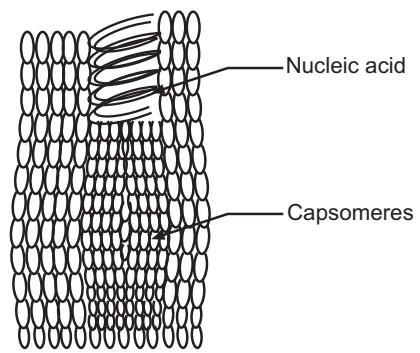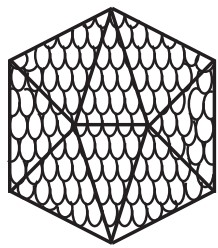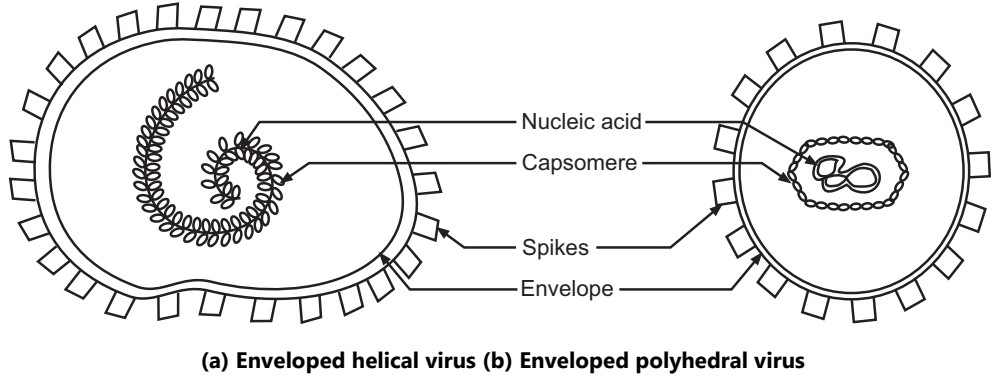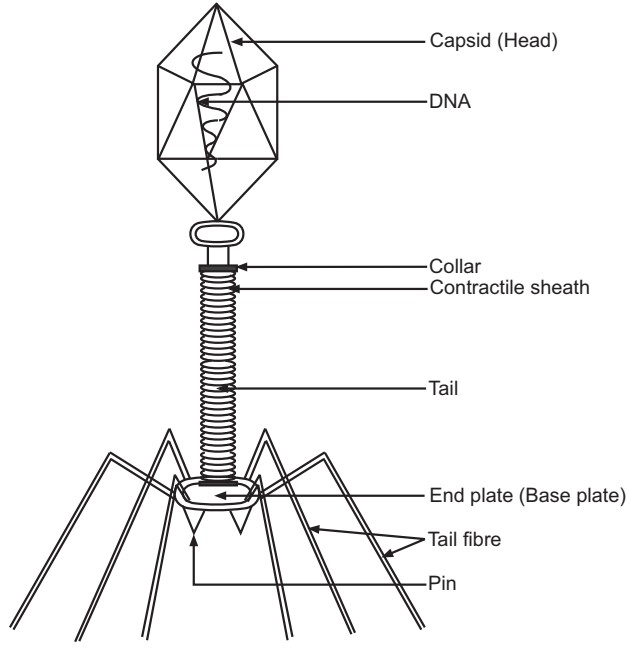Morphology of Viruses: A virion is a complete, fully developed viral particle composed of nucleic acid surrounded by a coat that protects it from the environment and serves as a vehicle of transmission from one host cell to another host cell. Viruses are not cellular and therefore do not have a nucleus, cytoplasm, or cell membrane.
A virus contains a single kind of nucleic acid, either DNA or RNA, which is the genetic material. The percentage of nucleic acid in a protein is about 1% for influenza viruses and about 50% for certain bacteriophages. The nucleic acid of a virus can be single-stranded or double-stranded. Depending on the virus, the nucleic acid can be linear or circular. In some viruses (e.g. influenza), the nucleic acid is in separate segments.
The nucleic acid of viruses is surrounded by a protein coat called the ‘capsid’. The structure of the capsid is ultimately determined by the viral nucleic acid. Each capsid is composed of protein subunits called ‘capsomeres’. In some viruses, the proteins composing the capsomeres are of a single type, in other viruses, many types of proteins may be present.
In some viruses, the capsid is covered by an envelope, which usually consists of some combination of lipids, proteins, and carbohydrates. Some animal viruses are released from the host cell and coat the virus with a layer of the host cell’s plasma membrane, that layer becomes the viral envelope.
Depending on the virus, envelopes may or may not be covered by spikes, which are carbohydrate-protein complexes that project from the surface of the envelope. Some viruses attach to host cells using spikes. This is one of the characteristics used for the identification of viruses. Viruses whose capsids are not covered by an envelope are known as ‘naked viruses’ or ‘non-enveloped viruses’. The capsid of a naked virus protects the nucleic acid from nuclear enzymes in biological fluids and promotes virus attachment to susceptible host cells. Capsid also serves as a vehicle of transmission from one host to another.
Viruses may be classified into different types, depending on the capsid structure:
1. Helical viruses: Helical viruses resemble long rods that may be rigid or flexible. The viral nucleic acid is found within a hollow, cylindrical capsid, which has a helical structure (Fig.1). The genetic material is generally single-stranded RNA (some cases ssDNA) bound into the protein helix by interactions between the negatively charged nucleic acid and positive charges on the protein. The length of a helical capsid is related to the length of the nucleic acid and diameter is dependent on the size and arrangement of protomers e.g. Rabies virus, Tobacco mosaic virus.
2. Polyhedral (Icosahedral) viruses: Many bacterial, plant and animal viruses are many-sided or polyhedral. The capsid of most polyhedral viruses has the shape of an icosahedron, a regular polyhedron with 20 triangular faces and 12 corners (Fig.2). The capsomers of each face form an equilateral triangle. In icosahedral capsids the nucleic acid, together with certain proteins, is tightly packed in a central core, forming a pool of parallel loops around a cylindrical hole. e.g. Adenovirus, Poliovirus.


3. Enveloped viruses: They are roughly spherical but highly pleomorphic (variable in shape) in nature. When helical or polyhedral viruses (Fig.3) are enclosed by envelopes, they are called enveloped helical (e.g. Influenza virus) and enveloped polyhedral viruses (e.g. Herpes simplex virus). The viral envelope is responsible for the protection of viruses from enzymes and certain chemicals. Most enveloped viruses are dependent on the envelope for infectivity.

4. Complex viruses: Some viruses, particularly bacterial viruses have very complicated structures. These are called complex viruses (Fig.4).
Certain bacterial viruses (bacteriophages) that infect E. coli are called T-even phages (T2, T4, T6). These phages have complex and characteristic morphology. They are tadpole-shaped, with a hexagonal head and a cylindrical tail. The head consists of a tightly packed core of nucleic acid (ds DNA) surrounded by a protein coat or capsid. The size of the head varies in different phages from 28 nm to 100 nm. The tail is composed of a hollow core, a contractile sheath surrounding the core, and a terminal base plate that has attached to it prongs tail fibers or both. The base of the tail six pins and six tail fibers have attached that bind to specific receptor sites on the bacterial surface. Phages T1, T5, and lambda of E. coli do not possess a contractile sheath and the tails of phages T3 and T7 of E. coli and P22 of Salmonella are short and non-contractile.

Make sure you also check our other amazing Article on : Cultivation of Fungi
